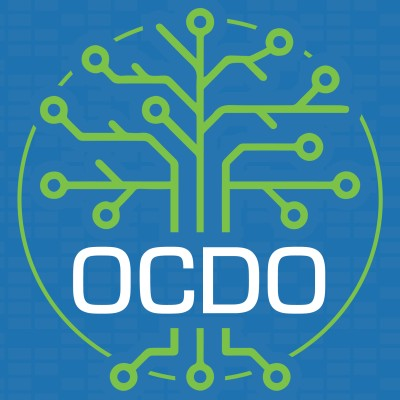The Education Department Showdown: Trump’s Bold Move and Its Implications
March 21, 2025, 4:18 pm

Location: United States, District of Columbia, Washington
Employees: 201-500
Founded date: 2019
Total raised: $1.25M
In a political landscape where education has become a battleground, former President Donald Trump has ignited a firestorm with his recent call to dismantle the U.S. Department of Education. This bold move is not just a policy shift; it’s a declaration of war against what he perceives as an overreaching federal bureaucracy. The stakes are high, and the implications could reshape the educational landscape for generations.
For decades, the idea of eliminating the Education Department has lingered in Republican circles like a ghost. It’s a specter that has haunted party discussions, often surfacing during election cycles. Yet, despite the rhetoric, action has been scarce. Trump’s latest push, however, is different. He’s not just talking; he’s taking steps to make it happen.
At a recent event at the White House, Trump unveiled an executive order aimed at dismantling the department. He held it up like a trophy, a symbol of his commitment to a more localized approach to education. His supporters cheered, viewing this as a long-overdue reckoning with what they see as a bloated federal agency. Critics, however, see it as a reckless gamble that could jeopardize funding for millions of students.
The Education Department, established in 1979, has been a critical player in American education. It oversees a staggering $1.6 trillion in federal student loans and distributes billions in aid to schools. This funding supports essential programs, from school meals to resources for homeless students. It’s a lifeline for many districts, particularly those in low-income areas. Yet, Trump and his allies argue that this federal oversight stifles local control and imposes a one-size-fits-all approach to education.
The roots of this movement can be traced back to the Tea Party and the rise of conservative parent groups. These factions have rallied against what they perceive as federal overreach, particularly during the COVID-19 pandemic. As schools closed and remote learning became the norm, frustrations boiled over. Parents began to question the influence of teacher unions and the curriculum being taught. They felt sidelined in decisions that directly impacted their children’s education.
Trump’s rhetoric paints the Education Department as a hotbed of “radicals, zealots, and Marxists.” This characterization resonates with his base, who feel that their values are under attack. The former president promises to return control to the states, where he believes it rightfully belongs. But this vision raises questions about the future of educational equity.
Federal funding, while only a small portion of public school budgets—about 14%—plays a crucial role in supporting vulnerable populations. Programs like Title I, which aids low-income schools, and the McKinney-Vento Act, which supports homeless students, rely heavily on federal dollars. If the department is dismantled, what happens to these programs? Will states step up to fill the void, or will they abandon these critical services?
The political ramifications of Trump’s plan are complex. While it energizes his base, it risks alienating moderate voters. Recent polling indicates that a significant majority of Americans oppose closing the Education Department. Education is a priority for many voters, and any disruption in funding could hit hard in states that supported Trump in the last election. States like Mississippi and North Carolina, which rely heavily on federal funds, could face severe consequences.
Even within the Republican Party, there is skepticism about Trump’s ability to close the department without congressional approval. In 2023, a proposal to eliminate the agency was met with resistance, with 60 Republicans joining Democrats to oppose it. This bipartisan pushback highlights the complexities of education policy and the delicate balance of power between federal and state governments.
Moreover, Trump’s vision for education extends beyond mere dismantling. He aims to enforce a more aggressive federal role, particularly in punishing schools that do not align with his administration’s interpretation of civil rights laws. This dual approach—eliminating the department while simultaneously increasing federal oversight—creates a paradox that could confuse voters and educators alike.
As the dust settles from Trump’s announcement, one thing is clear: the battle over education is far from over. Advocates for public education are gearing up for a fight. They argue that education is the bedrock of the American dream and that federal support is essential for leveling the playing field. The stakes are high, and the outcome will shape the future of education in America.
In the coming months, expect legal challenges to emerge as opponents of Trump’s plan mobilize. The Education Department’s fate hangs in the balance, caught between the fervor of a political movement and the realities of educational needs. As this saga unfolds, one question looms large: will the promise of local control lead to a brighter future for American education, or will it deepen the divides that already exist?
In the end, education is not just a policy issue; it’s a reflection of our values as a society. The decisions made today will echo through the halls of schools for years to come. As we navigate this turbulent landscape, let’s remember that the future of our children is at stake.
For decades, the idea of eliminating the Education Department has lingered in Republican circles like a ghost. It’s a specter that has haunted party discussions, often surfacing during election cycles. Yet, despite the rhetoric, action has been scarce. Trump’s latest push, however, is different. He’s not just talking; he’s taking steps to make it happen.
At a recent event at the White House, Trump unveiled an executive order aimed at dismantling the department. He held it up like a trophy, a symbol of his commitment to a more localized approach to education. His supporters cheered, viewing this as a long-overdue reckoning with what they see as a bloated federal agency. Critics, however, see it as a reckless gamble that could jeopardize funding for millions of students.
The Education Department, established in 1979, has been a critical player in American education. It oversees a staggering $1.6 trillion in federal student loans and distributes billions in aid to schools. This funding supports essential programs, from school meals to resources for homeless students. It’s a lifeline for many districts, particularly those in low-income areas. Yet, Trump and his allies argue that this federal oversight stifles local control and imposes a one-size-fits-all approach to education.
The roots of this movement can be traced back to the Tea Party and the rise of conservative parent groups. These factions have rallied against what they perceive as federal overreach, particularly during the COVID-19 pandemic. As schools closed and remote learning became the norm, frustrations boiled over. Parents began to question the influence of teacher unions and the curriculum being taught. They felt sidelined in decisions that directly impacted their children’s education.
Trump’s rhetoric paints the Education Department as a hotbed of “radicals, zealots, and Marxists.” This characterization resonates with his base, who feel that their values are under attack. The former president promises to return control to the states, where he believes it rightfully belongs. But this vision raises questions about the future of educational equity.
Federal funding, while only a small portion of public school budgets—about 14%—plays a crucial role in supporting vulnerable populations. Programs like Title I, which aids low-income schools, and the McKinney-Vento Act, which supports homeless students, rely heavily on federal dollars. If the department is dismantled, what happens to these programs? Will states step up to fill the void, or will they abandon these critical services?
The political ramifications of Trump’s plan are complex. While it energizes his base, it risks alienating moderate voters. Recent polling indicates that a significant majority of Americans oppose closing the Education Department. Education is a priority for many voters, and any disruption in funding could hit hard in states that supported Trump in the last election. States like Mississippi and North Carolina, which rely heavily on federal funds, could face severe consequences.
Even within the Republican Party, there is skepticism about Trump’s ability to close the department without congressional approval. In 2023, a proposal to eliminate the agency was met with resistance, with 60 Republicans joining Democrats to oppose it. This bipartisan pushback highlights the complexities of education policy and the delicate balance of power between federal and state governments.
Moreover, Trump’s vision for education extends beyond mere dismantling. He aims to enforce a more aggressive federal role, particularly in punishing schools that do not align with his administration’s interpretation of civil rights laws. This dual approach—eliminating the department while simultaneously increasing federal oversight—creates a paradox that could confuse voters and educators alike.
As the dust settles from Trump’s announcement, one thing is clear: the battle over education is far from over. Advocates for public education are gearing up for a fight. They argue that education is the bedrock of the American dream and that federal support is essential for leveling the playing field. The stakes are high, and the outcome will shape the future of education in America.
In the coming months, expect legal challenges to emerge as opponents of Trump’s plan mobilize. The Education Department’s fate hangs in the balance, caught between the fervor of a political movement and the realities of educational needs. As this saga unfolds, one question looms large: will the promise of local control lead to a brighter future for American education, or will it deepen the divides that already exist?
In the end, education is not just a policy issue; it’s a reflection of our values as a society. The decisions made today will echo through the halls of schools for years to come. As we navigate this turbulent landscape, let’s remember that the future of our children is at stake.

